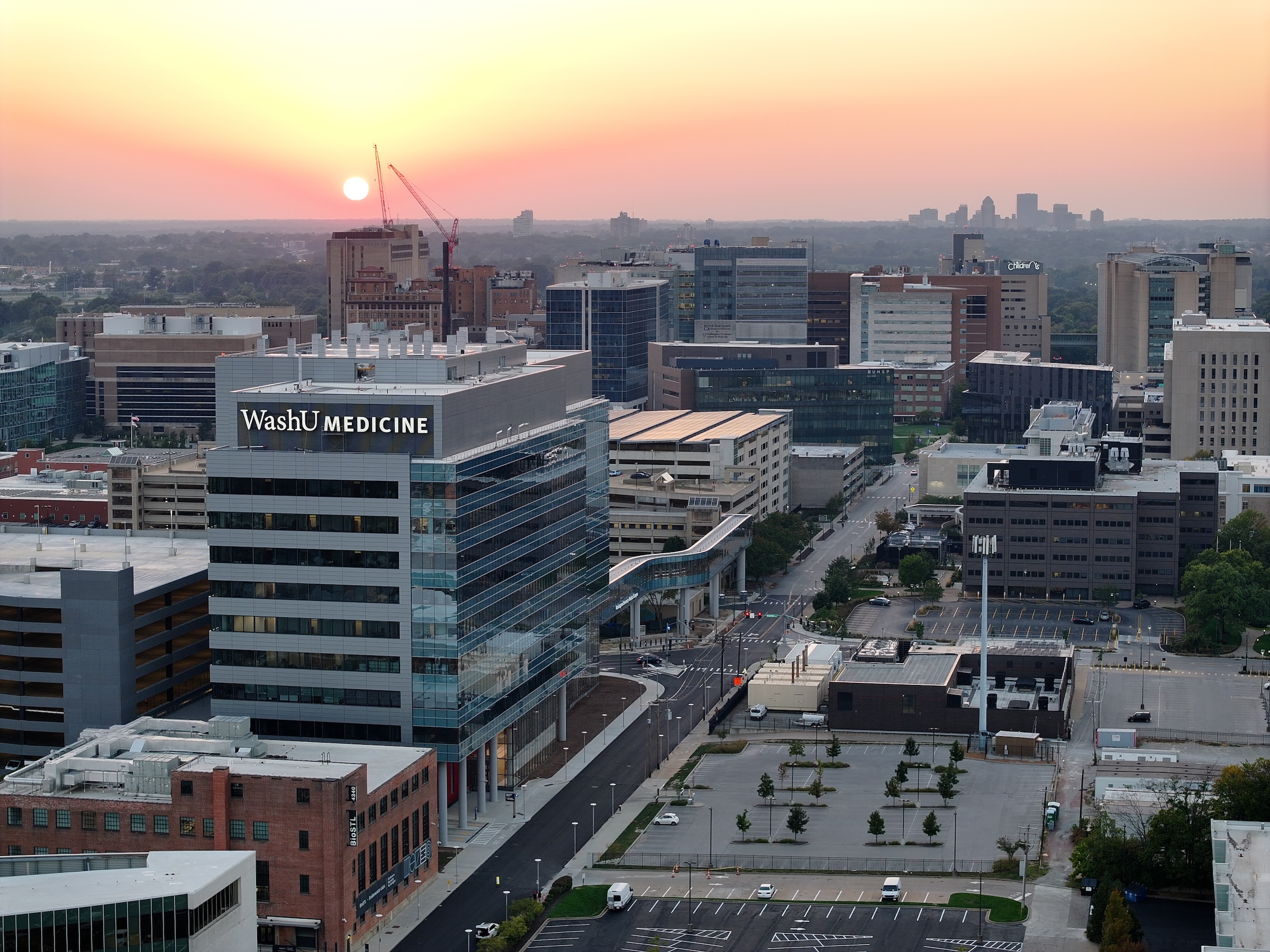In St. Louis’ Cortex Innovation District, Washington University School of Medicine recently opened its new Jeffrey T. Fort Neuroscience Research Building.
Designed by CannonDesign and Perkins&Will, the 11-story, 609,000-sf facility is one of the largest neuroscience buildings in the world, according to a statement from McCarthy Building Companies, Inc., the project’s construction manager.
Intended to advance research in areas such as Alzheimer’s disease and brain tumors, the $616 million facility currently accommodates 1,000 faculty and staff members, including 95 research teams. In the future, additional space could be constructed to accommodate an additional 350 faculty and staff members, including about 145 research teams.
The project faced labor and supply chain challenges when construction started in spring 2020, at the beginning of the COVID-19 pandemic. Despite this, the project finished on budget and on schedule. McCarthy attributes this success to effective pre-project planning and the use of lean construction techniques.
“Early collaboration played a pivotal role in the success of this project,” Andy Poirot, vice president and project executive, McCarthy Building Companies, Inc., said in the statement. “We successfully realized the client’s vision, delivering a cutting-edge research facility poised to enhance lives for generations to come.”
Prefabrication and 3D modeling also helped the team overcome the project constraints. About 90% of the mechanical, electrical, and plumbing (MEP) systems were prefabricated and tested before installation onsite. Prefab components both improved quality and reduced the number of onsite professionals needed for MEP installation. The building’s façade, with a unitized curtain wall, also was prefabricated.
In addition to the research building, the facility features a parking structure with 1,846 vehicle spaces as well as bicycle racks and electric vehicle charging stations. A 1,000-ft elevated pedestrian connection spans 360 ft, connecting the new building to an existing parking garage and surrounding structures. The project also includes a two-story, 24,775-sf utility plant.
The project is designed to achieve LEED Gold certification.
On the Building Team:
Owner: Washington University School of Medicine
Architect of record and structural engineer: CannonDesign
Design architect: Perkins&Will
MEP engineer: Affiliated Engineers, Inc., with CannonDesign also on mechanicals
Construction manager: McCarthy Building Companies, Inc., partnered with Tarlton Corporation and KAI Enterprises
Related Stories
| May 18, 2011
Major Trends in University Residence Halls
They’re not ‘dorms’ anymore. Today’s collegiate housing facilities are lively, state-of-the-art, and green—and a growing sector for Building Teams to explore.
| May 18, 2011
Raphael Viñoly’s serpentine-shaped building snakes up San Francisco hillside
The hillside location for the Ray and Dagmar Dolby Regeneration Medicine building at the University of California, San Francisco, presented a challenge to the Building Team of Raphael Viñoly, SmithGroup, DPR Construction, and Forell/Elsesser Engineers. The 660-foot-long serpentine-shaped building sits on a structural framework 40 to 70 feet off the ground to accommodate the hillside’s steep 60-degree slope.
| Apr 13, 2011
Duke University parking garage driven to LEED certification
People parking their cars inside the new Research Drive garage at Duke University are making history—they’re utilizing the country’s first freestanding LEED-certified parking structure.
| Apr 12, 2011
Rutgers students offered choice of food and dining facilities
The Livingston Dining Commons at Rutgers University’s Livingston Campus in New Brunswick, N.J., was designed by Biber Partnership, Summit, N.J., to offer three different dining rooms that connect to a central servery.
| Apr 12, 2011
College of New Jersey facility will teach teachers how to teach
The College of New Jersey broke ground on its 79,000-sf School of Education building in Ewing, N.J.
| Mar 23, 2011
After 60 years of student lobbying, new activity center opens at University of Texas
The new Student Activity Center at the University of Texas campus, Austin, is the result of almost 60 years of students lobbying for another dedicated social and cultural center on campus. The 149,000-sf facility is designed to serve as the "campus living room," and should earn a LEED Gold certification, a first for the campus.
| Mar 18, 2011
Universities will compete to build a campus on New York City land
New York City announced that it had received 18 expressions of interest in establishing a research center from universities and corporations around the world. Struggling to compete with Silicon Valley, Boston, and other high-tech hubs, officials charged with developing the city’s economy have identified several city-owned sites that might serve as a home for the research center for applied science and engineering that they hope to establish.
| Mar 15, 2011
What Starbucks taught us about redesigning college campuses
Equating education with a cup of coffee might seem like a stretch, but your choice of college, much like your choice of coffee, says something about the ability of a brand to transform your day. When Perkins + Will was offered the chance to help re-think the learning spaces of Miami Dade College, we started by thinking about how our choice of morning coffee has changed over the years, and how we could apply those lessons to education.
| Mar 11, 2011
University of Oregon scores with new $227 million basketball arena
The University of Oregon’s Matthew Knight Arena opened January 13 with a men’s basketball game against USC where the Ducks beat the Trojans, 68-62. The $227 million arena, which replaces the school’s 84-year-old McArthur Court, has a seating bowl pitched at 36 degrees to replicate the close-to-the-action feel of the smaller arena it replaced, although this new one accommodates 12,364 fans.















